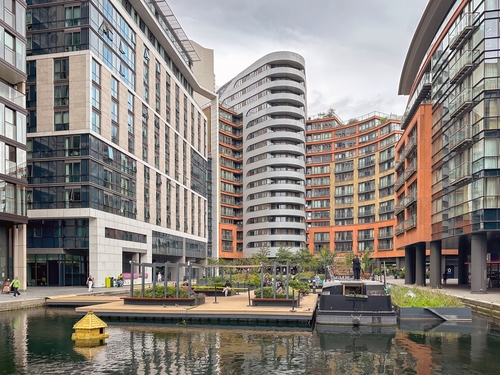

In our latest blog, an IEMA member shares their professional experience of trying to progress in a less-than-inclusive workplace. This powerful account will be familiar to some readers and completely new to others, which is why sharing and learning is an important step in improving diversity and inclusion in our organisations. If you would like to share your story, please email info@diversesustainability.net.
Noting the initial absence of diversity when I joined consultancy, being the only minority member in my team didn’t present itself as an issue at first, as I had worked in similar environments in the past. Excited to learn and develop, I wanted to get to know my colleagues and establish good working relationships, however it soon became clear after several occasions that the team did not reciprocate the feeling. The first hurdles were with my manager when expressing an interest in pursuing my IEMA membership. I was informed I would need to pursue this myself as it was viewed as a personal opportunity, even though this contradicted what I was told at my interview, where memberships such as IEMA were encouraged and supported by management. Having several members in the team as Practitioners, I sought advice to find out if they knew any other support mechanisms which had helped them. Having been told they didn’t know of any, I found out at a much later date that they were part of an online IEMA group (who’s aims were to help colleagues in the company develop their IEMA memberships, ironically).
Development opportunities were limited as they filtered through certain individuals in the team. If you weren’t on their social radar, you can forget about any chances of progression. This was often the case for me, where numerous attempts to get involved or join events were often met with promised words, but no practical action. I remember vividly how excited I was to have lunch with a colleague in my team one day. This proved to be very short-lived when she decided minutes before we were due to leave, to take up another lunch offer from someone else in the team. I would always be left questioning myself – did I say something? Maybe she just forgot, and will catch up when she gets back? (Note: she never did – in fact she stopped talking to me altogether). In the end, I lost count at the number of social activities and professional events I had been excluded from, it even got to the point where I would see diary invites in other peoples’ calendars that were titled ‘the chosen few’. It was embarrassing and humiliating to feel so openly excluded. It had gotten to a stage where it had even been picked up by other colleagues in the wider office – this is how apparent the issue was.
On numerous occasions I spoke to my manager about these issues to understand how relationships could be improved. Unfortunately, the responsibility fell on me for being the cause of the problem, as it was my issue for not doing enough to integrate into the team. After explaining the difficulties and isolation I had encountered, I was offered no assistance or support, but would often have my situation downplayed or questioned for being too exaggerated. On several of our meetings my manager commented that my behaviour came across as ‘too assertive’ and ‘aggressive’, although she provided no examples when I asked her. It was painful to be labelled these terms without fully understanding the reasons behind it – if you don’t provide any examples, how am I able to learn and improve? To this day I am still fearful of speaking up in my team or on calls in case I am labelled as being ‘too assertive or aggressive’.
Things started to get unbearable when the project I was sub-consulted to had paused. This reduced my hectic workload overnight to nothing. Unsure what the next steps were, I was informed by my manager that I needed to find another project to work on – but was given no help or experience in how I needed to go about this. Colleagues who knew about my situation offered no assistance to help. Not having any work to do amplified how invisible I was within the team; whilst I was working I managed to block out what was happening, but without my workload I felt the full impacts of being ostracised.
That painful reminder of being the outsider looking in, forever scouting for reasons why I’m not accepted led me to believe that despite how hard I tried, maybe the reason for all this was purely based on the difference that I, an Asian woman, was denied the opportunity to be welcomed and accepted in an all-white team.
The combination of all these issues resulted in me taking sick leave. It was evident after several visits to the GP that both my physical and mental health had taken a huge toll, and it has taken months to recover from these experiences. After returning from sick leave, it was apparent that all trust was lost in trying to make things work, and I decided it was time to leave consultancy.
From the outset when I joined consultancy, there was an active presence of ‘culture fit’ within the team. This leads to stagnation, a ‘group think’ mentality which doesn’t bring out the best in individuals. I believe recruitment and management need to prioritise being a ‘cultural addition’ over a ‘cultural fit’. Businesses need to welcome new diverse ways in thinking, people that challenge, innovate and bring out the best in each other. Choosing to stick to a ‘cultural fit’ will only bring similar people to a company – by choosing this route, you are denying a large pool of experienced, talented people representing many backgrounds and walks of life who have so much to offer.

As a minority, getting an environmental job is just the start of many hurdles – often the hardest part is the lack of integration and acceptance in predominantly white teams. As an Asian woman, my experience navigating the environmental sector has been difficult, and I have often wondered whether it was worth continuing at all.
I hope sharing my personal account will enable you to understand some of the issues faced by minority people in the environment industry. I encourage anyone who reads this to reflect not only on how diverse their teams are, but how your biases (which we all have), learned behaviours and actions may alienate others. Signing up to a commitment or a pledge to justify on the surface that you are concerned about diversity in simply not enough– you need to address the root cause of the issue. These conversations won’t be comfortable, but in order to create diverse, inclusive teams where all can thrive in – it is necessary, and vital, if we are to address the critical environmental threats our world faces today.

